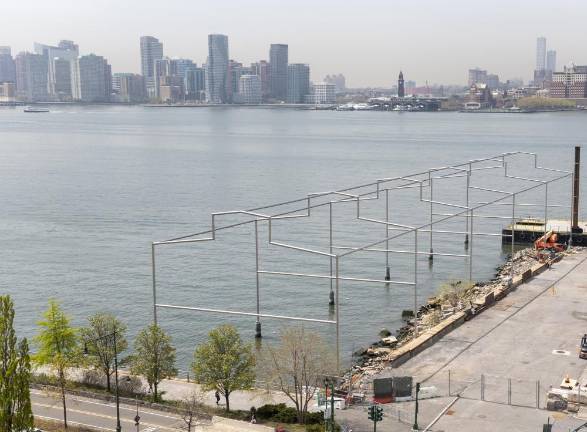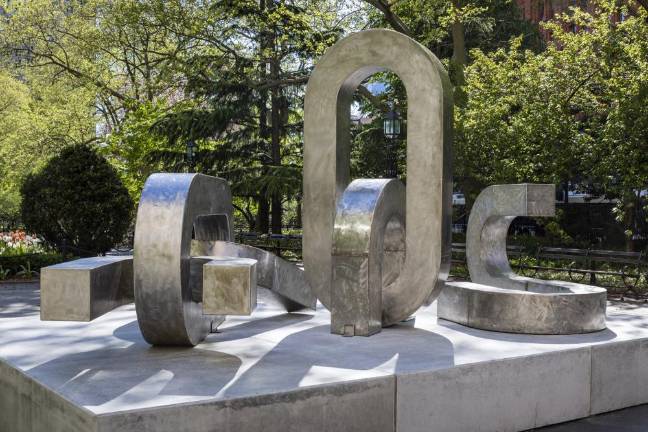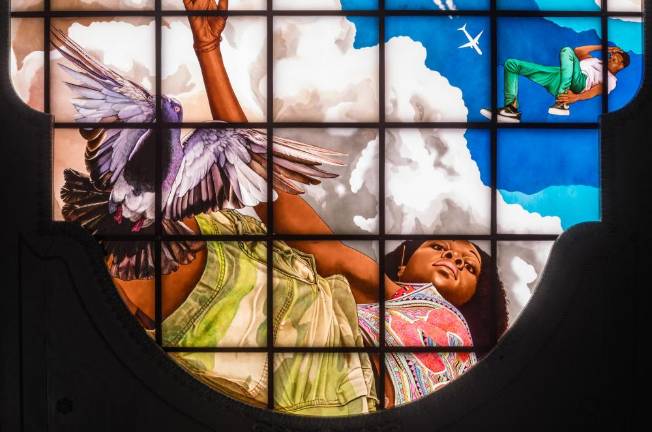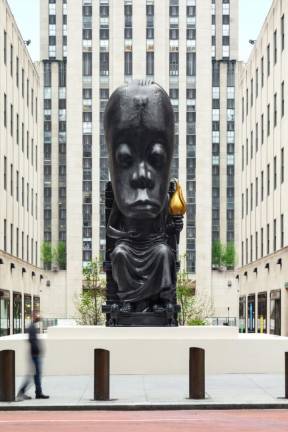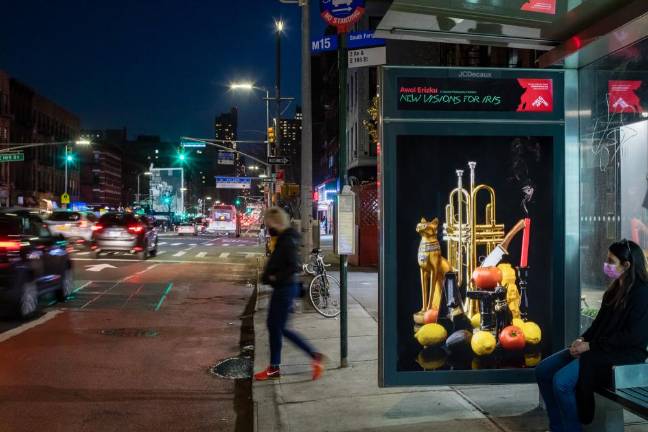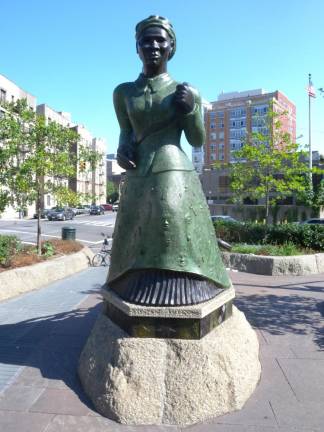When Black Lives Matter protests led individuals as well as institutions to reassess, reconsider and redress racial injustices it was a starting point. This summer presentations by prominent Black artists are on view in parks, public spaces and plazas throughout New York, carrying dialogues forward. Outstanding exhibitions bring spectacular art from lower Manhattan to Rockefeller Center and beyond. Some are temporary, others will be here permanently, but all are worth a trip to see.
A structure that appears to be the skeleton of a building rises from the waterfront. Is it unfinished? Broken? A forgotten artifact from an urban excavation? Whatever it may or may not evoke, David Hammons’ “Day’s End” across from the Whitney Museum raises questions, as was intended. It was seven years in the making. It’s the largest public artwork completed during the pandemic, and it taps into a deep well of New York’s art and social history.
“Day’s End” references a cutting-edge interventional work of the same name from 1975, in which artist Gordon Matta-Clark cut large openings letting light and air into an abandoned shed that was being used as a gathering place for the LGBTQ community. If the haunting sculpture looks like a drawing, that’s by design. In 2014, as the Whitney was preparing to reopen in the Meatpacking District, Hammons visited and looked out at an empty Pier 52 with Whitney director Adam Weinberg. A few days later, a sketch arrived in the mail, and Weinberg saw its potential. Now, that sketch has been transformed into permanent work. In “Artists Among Us,” a podcast narrated by artist Carrie Mae Weems and presented on the Whitney’s website, Weinberg says, “It’s a sculpture. And I see it also as a container that contains nothing and a container that contains everything ... You look through it, you see the city, you see the water, you see the light, you see the air.” Weems adds, “David’s work isn’t always about what you see or even what you notice. Often, it’s about what’s invisible but right in front of you.”
Central Motif
“Melvin Edwards: Brighter Days” will be on view at City Hall Park till the end of November. The Public Art Fund exhibition brings together five of the artist’s monumental sculptures, all of which include or reference chains, a central motif in Edwards’ work. The most recent is “Song of the Broken Chains,” completed in 2020. Enormous links, some forged together, some broken apart, gleam in the sun and reflect the colors of the park and the city. The location, once the African Burial Ground and more recently the site of protests, adds poignancy to the exhibition, but the title, “Brighter Days,” chosen by Edwards, affirms his “optimistic view of our shared future” say the organizers.
Millions of travelers will see Kehinde Wiley’s painted windows as they pass through the new Moynihan Train Hall. “Go,” a piece commissioned by Empire State Development and the Public Art Fund, crowns the hall off 33rd Street. It’s a painted glass triptych that, like much of Wiley’s work, references monumental art of the past, but replaces imposing Europeans with contemporary Black figures. Here, the artist riffs on 18th century ceiling frescoes by Giovanni Battista Tiepolo. But in place of warriors, trumpeters and supernatural beings held aloft in the clouds, Wiley places New York kids breakdancing in sneakers. It’s brilliant and bright, uplifting in many senses, and it’s on permanent display.
“Myth Creation”
Through June 29th, “Oracle,” a two-story tall, 15,000 pound bronze sculpture by Sanford Biggers towers over Rockefeller Center’s Channel Garden off Fifth Avenue. It was commissioned by the non-profit Art Production Fund and presented by them along with Rockefeller Center and Marianne Boesky Gallery, and it’s the centerpiece of a campus-wide exhibition that brings murals, flags, film, photographs, paintings and sculptures by Biggers to several locations in Rockefeller Center. “I’ve always been intrigued by Rockefeller Center for its architectural history and mythological references,” the artist noted in a statement, adding, “Rockefeller Center is an ideal context for myth creation.” Incorporating abstraction and realism, traditional and new media, African and European styles and imagery, Biggers presents new thoughts on histories, myths and power.
Awol Erizku was born in Ethiopia, but grew up in the Bronx and attended Cooper Union, so it’s fitting that a body of photographs completed in the last year is now on view on JCDecaux bus shelters across all five boroughs. Though the artist is probably best known for his portraits of Beyoncé during her 2017 pregnancy, this group “New Visions for Iris” was created as a visual dialogue and a way to have a lifelong conversation with his daughter, who was born during this past year of pandemic and unrest. Look for vibrant color-soaked portraits, abstractions, and still-lifes that incorporate references to music, Egyptian history, African art, and contemporary life in this Public Art Fund exhibition on view through June 20th.
Not new, but enduring and inspiring and never more relevant, for sculpture that combines history, human rights, strength and women’s creativity, head to “Harriet Tubman Triangle” to see contemporary artist Alison Saar’s tribute to the escaped slave, abolitionist, activist and heroine. On permanent view since 2008, Saar’s monumental portrait depicts Tubman, trailed by a twisted tail of roots that both nurture and constrain. Did she break the roots of slavery or plant new roots for the scores of slaves she led to freedom? Both. A previously unused traffic circle at the corner of St. Nicholas Ave. and Frederick Douglass Blvd. is now blooming with plants native to New York and Tubman’s home state of Maryland, and crowned by a stirring and beautiful work of art.
